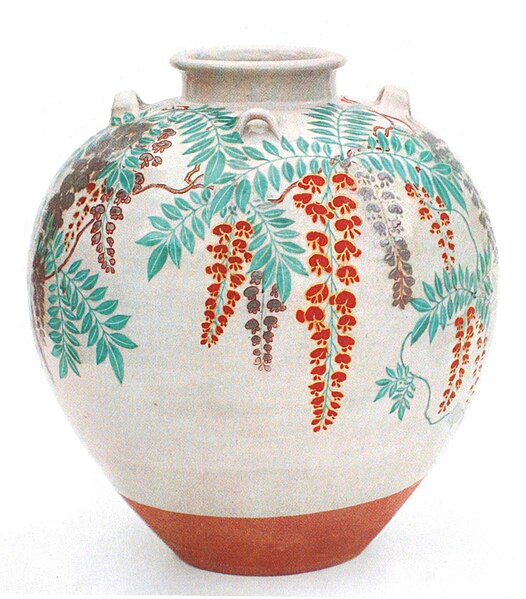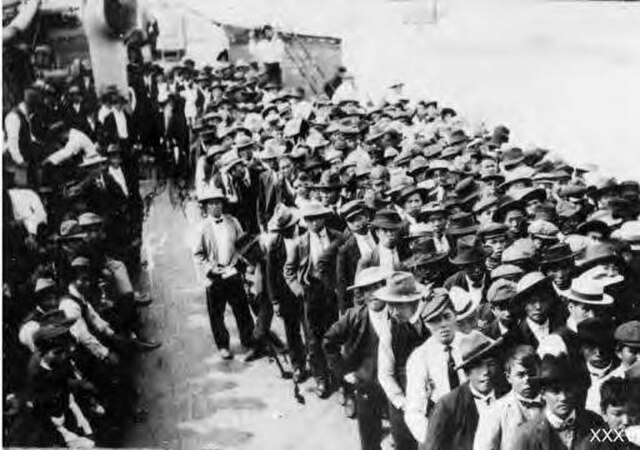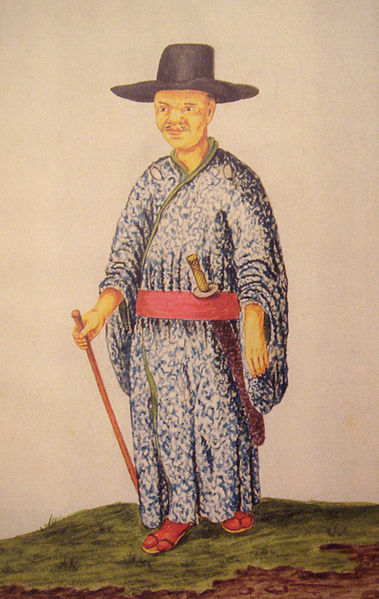Japanese in the Philippines
Japanese settlement in the Philippines or Japanese Filipino, refers to one of the largest branches of Japanese diaspora having historical contact with and having established themselves in what is now the Philippines. This also refers to Filipino citizens of either pure or mixed Japanese descent currently residing in the country, the latter a result of intermarriages between the Japanese and local populations.
Takayama Ukon was a Japanese Catholic daimyō who migrated to the Philippines together with 300 Kirishitan refugees in 1614 as one of the many waves of Japanese immigration to the Philippines during the Christian persecution throughout 1600's in Japan under Tokugawa shogunate. Their descendance diluted to the local populations without records of number.
Traditional tapayan jar, used as a lawn ornament, water jar, or for bread baking, from the Philippines
Painted Tea-leaf jar, used as a tea canister, with wisteria designs by Nonomura Ninsei, Edo period Japan
A native Filipina with Chinese, American / European and Japanese settlers in the Philippines, (1900)
The Japanese diaspora and its individual members, known as Nikkei (日系) or as Nikkeijin (日系人), comprise the Japanese emigrants from Japan residing in a country outside Japan. Emigration from Japan was recorded as early as the 15th century to the Philippines, but did not become a mass phenomenon until the Meiji period (1868–1912), when Japanese emigrated to the Philippines and to the Americas. There was significant emigration to the territories of the Empire of Japan during the period of Japanese colonial expansion (1875–1945); however, most of these emigrants repatriated to Japan after the 1945 surrender of Japan ended World War II in Asia.
Justo Takayama monument and historical marker at Plaza Dilao in Manila
View of passengers arriving in Vancouver aboard the steamship Kumeric
Japanese Christian in Jakarta, c. 1656
Japanese and Korean children, 1908–1922








